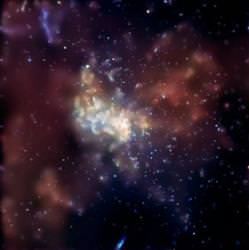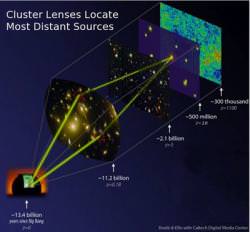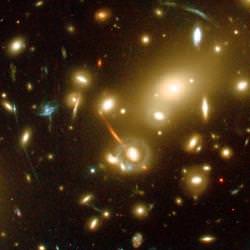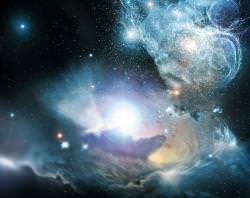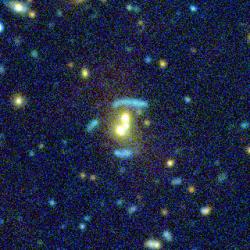Astronomers have several techniques to discover planets. But one of the least used so far, gravitational microlensing, might be just the right technique to find planets in the habitable zone of nearby dwarf stars.
The first way astronomers find planets is with the radial velocity technique. This is where the gravity of a heavy planet yanks its parent star around so that the wobbling motion too and fro can be measured.
The second technique is through transits. This is where a planet dims the light coming from its parent star as it passes in front. By subtracting the light from when the planet isn’t in front of the star, astronomers can even measure its atmosphere.
The third way is through gravitational microlensing. When two stars are perfectly lined up, the closer star acts as a natural lens, brightening the light from the more distant star. Here on Earth, we see a star brighten in a very characteristic way, and then dim down again. A blip in the change of brightness can be attributed to a planet.
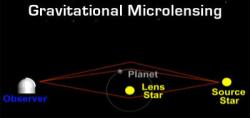
Unlike the other two methods, microlensing allows you to reach out and see planets at tremendous distances – even clear across the galaxy. The problem with microlensing is that it’s a one-time opportunity. You’re never going to see those stars line up in just the same way again.
But Rosanne Di Stefano and Christopher Night from the Harvard-Smithsonian Center for Astrophysics in Cambridge, MA think there’s another way microlensing could be used. In their research paper entitled, Discovery and Study ofNearby Habitable Planets with Mesolensing, the researchers propose that many stars have a high probability of becoming a lens.
Instead of watching the sky, hoping to see a lensing event, you watch specific stars and wait for them to pass in front of a more distant star.
These high-probablility lenses are known as mesolenses. By studying a large number of dwarf stars, they expect that many of them should pass in front of a more distant star as often as once a year. And if pick your targets carefully, like dwarf stars moving in front of the Magellanic Clouds, you might get even more opportunities.
Unlike other methods of planet detection, gravitational lensing relies on light from a more distant star. It is therefore important to ask what fraction of nearby dwarfs will pass in front of bright sources and so can be studied with lensing. Within 50 pc, there are approximately 2 dwarf stars, primarily M dwarfs, per square degree.
For less massive red dwarf stars, you should be able to see them at a distance of 30 light years, and for Sun-mass stars out to a distance of 3,000 light years. These stars are close enough that if a planet is detected in the habitable zone, followup techniques should be possible to confirm the discovery.
They calculated that there are approximately 200 dwarf stars passing in front of the Magellanic Clouds right now. And many of these will have lensing events with the stars in the dwarf galaxies.
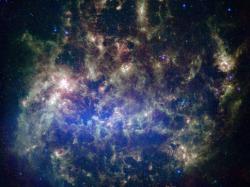
Instead of monitoring specific stars, previous surveys have just watched tens of millions of stars per night – hoping for any kind of lensing event. Even though 3,500 microlensing candidates have been discovered so far, they tend to be with stars at extreme ranges. Even if there were planets there, they wouldn’t show up in the observations.
But if you pick your stars carefully, and then watch them for lensing events, the researchers believe you should see that brightening on a regular basis. You could even see the same star brighten several times, and make follow-up observations on its planets.
And there’s another advantage. Both the radial velocity and transit methods rely on the planet and star being perfectly lined up from our vantage point. But a microlensing event still works, even if the planetary system is seen face on.
By using this technique, the researchers think that astronomers should turn up lensing events on a regular basis. Some of these stars will have planets, and some of these planets will be in their star’s habitable zone.
Original Source: Arxiv


